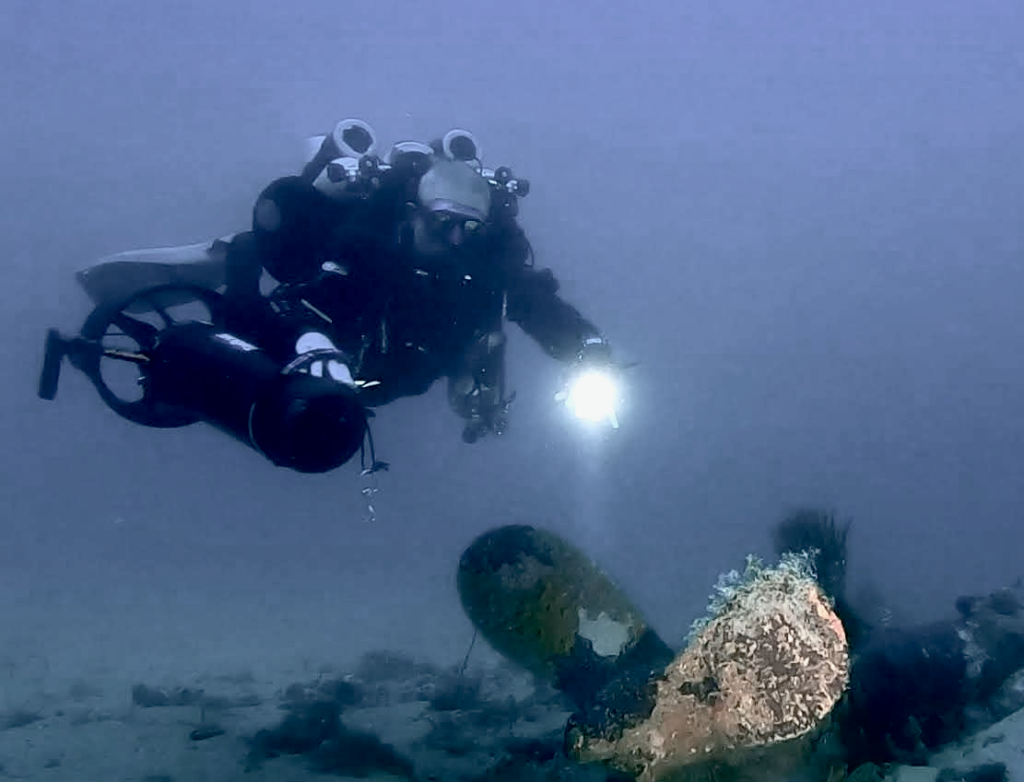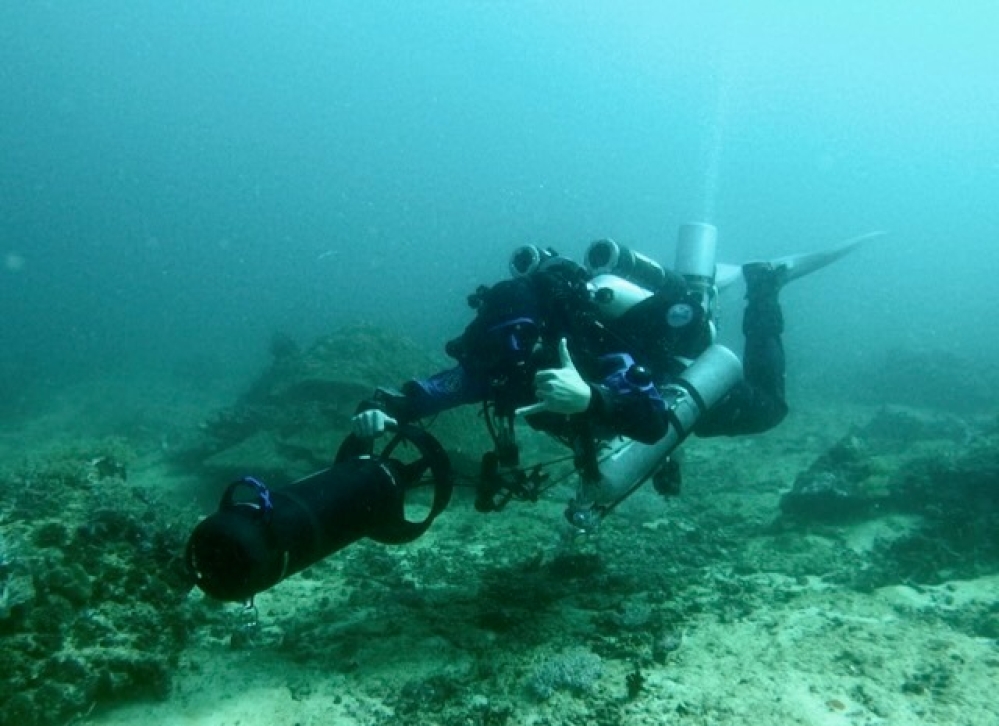- Dive planning taking battery life into account
- Equipment pre-dive preparation and post-dive care
- Water entry and exit
- DPV use at the surface and underwater
- Descents and ascents
- Depth management in consideration of greater speed of movement
- Gas monitoring and management while scootering
- DPV rigging for one-handed use
- User-level maintenance
- Dive planning with gas, distance, and time constraints; coordination with boat crew
- Buoyancy and trim
- Team formation and cohesion, navigation, light signals, separation procedures
- Managing DPV failures underwater
- Towing a diver with a failed DPV
- Gas sharing while scootering
- Propeller entanglement procedures
- “Parking” the scooter to enable other tasks like gas switches, DSMB deployment, etc.
- Environmental considerations, low-impact use, DPV etiquette
 At Tech Asia however, we feel that two dives is a little on the low side to absorb the skills and build familiarity with the equipment to the point where students are able to safely use scooters on technical dives without professional guidance. These things can be very distracting initially, and distraction is something we can’t afford. That’s why we offer this course with four dives, which are included in the price. Assuming no problems with skill development, the final two dives will be regular technical dives with DPVs at the student’s current level of training. Course duration is about three days.So which one is for you?If you just want to try your hand at something new and have fun with it, then the recreational course is fine. I have yet to meet a diver who doesn’t enjoy scootering. However, if you plan on using scooters for tech dives, or if you’re the kind of recreational diver who enjoys getting into the nuts and bolts of things, then you may want to consider the more comprehensive, technical course. Note that you don’t necessarily have to be a technical diver to enroll. All of the skills taught can be practiced in recreational equipment configuration.Note : This article is reposted from Tim Bloemekes personal Blog. More of his work can be found at https://timblmk.com/blog/
At Tech Asia however, we feel that two dives is a little on the low side to absorb the skills and build familiarity with the equipment to the point where students are able to safely use scooters on technical dives without professional guidance. These things can be very distracting initially, and distraction is something we can’t afford. That’s why we offer this course with four dives, which are included in the price. Assuming no problems with skill development, the final two dives will be regular technical dives with DPVs at the student’s current level of training. Course duration is about three days.So which one is for you?If you just want to try your hand at something new and have fun with it, then the recreational course is fine. I have yet to meet a diver who doesn’t enjoy scootering. However, if you plan on using scooters for tech dives, or if you’re the kind of recreational diver who enjoys getting into the nuts and bolts of things, then you may want to consider the more comprehensive, technical course. Note that you don’t necessarily have to be a technical diver to enroll. All of the skills taught can be practiced in recreational equipment configuration.Note : This article is reposted from Tim Bloemekes personal Blog. More of his work can be found at https://timblmk.com/blog/
